Many chicken lovers and farmers value the size of the eggs when raising chickens, as it’s enjoyable. Larger eggs are better and can be used in many ways, such as doubling your breakfast and selling for more money. We will talk about the Top 21 Chickens Breeds That Lays the Largest Eggs.
We will discuss these top 21 breeds one by one and delve into their characteristics. Choosing from these top breeds can help raise your farm chicken to get big eggs.
What Hen Laid The World’s Largest Egg
White Leghorn chicken lays the largest egg in the world (this chicken is also in our largest egg-laying chickens list); Guinness World Record reports that the world’s largest egg laid by a hen came from a White Leghorn hen in Vineland, New Jersey, USA, in February 1956.
This egg measured 31.2 centimeters (12.29 inches) in circumference and weighed 454 grams (16 ounces). It contained two yolks and two egg whites. Their egg is almost equal to six average eggs, which is why it is considered the largest egg in the world..
Egg Size and Weight Categories
In the United States, eggs are sorted into size categories based on weight. For example, a dozen large eggs weigh about 2.1 ounces per egg.
But we simplified this for your understanding; let’s understand this:
- Jumbo Egg: Around 2.5 oz (70 grams) per egg
- Extra-large Egg: Around 2.2 oz (63 grams) per egg
- Large Eggs: Around 2 oz (56 grams) per egg
- Medium Eggs: Around 1.75 oz (50 grams) per egg
- Small Eggs: Around 1.5 oz (42 grams) per egg
- Tiny or Peewee Eggs: Around 1.2 oz (35 grams) per egg
What Chicken Lays The Largest Egg
Generally, a chicken egg weighs between 50 and 70 grams, depending on several factors. Egg sizes are categorized from tiny to jumbo, with large, extra large, and jumbo being the most common.
Many of the largest egg-laying chickens lay large, extra-large, or jumbo eggs, but egg size also depends on many factors, such as breed, age, genetics, diet, etc.
Here is the list of the top largest egg-laying chicken breeds:
Best Chicken Breeds for Jumbo Eggs
-
Blue Andalusian Chickens
First in the top chicken breeds that lay the largest eggs is the Andalusian chicken, from the rugged region of Andalusia in Spain, which as a mysterious history.
It might have been bred from local Black Castilian chickens and other nearby breeds. Andalusian chickens are known for their unique blue feathers and extraordinary egg-laying ability.
- Egg Weight: About 2.5–2.8 ounces (70–80 grams)
- Egg Color: White
- Egg Size: Jumbo
- Eggs Per Year: Up to 200

-
Minorca Chickens
The Minorca, also known as Gallina de Menorca in Catalan and Menorquina in Spanish, is a chicken breed from Menorca. Minorcas are the largest chicken breed in the Mediterranean area. They are friendly, making them an excellent choice for any chicken flock.
- Egg Weight: About 2.2–2.5 ounces (65–70 grams)
- Egg Color: White
- Egg Size: Extra-Large to Jumbo
- Eggs Per Year: Up to 150
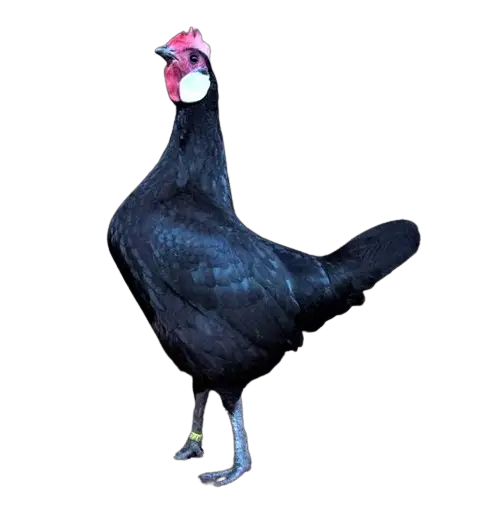
-
Delaware Chickens
The Delaware is a type of chicken from Delaware, USA, known for its unique feather pattern. It was first called the Indian River and was developed in the mid-1900s. Delawares are known for being calm and maturing quickly.
- Egg Weight: About 2–2.5 ounces (56–70 grams)
- Egg Color: Brown
- Egg Size: Large to Extra-Large to Jumbo
- Eggs Per Year: Up to 280
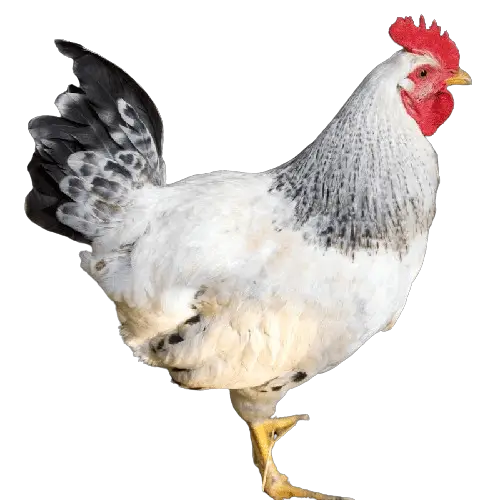
-
Isa Browns Chickens
The ISA Brown is a mixed breed of chicken with unique coloration linked to its sex. It was created from many breeds, including Rhode Island Reds and Rhode Island Whites. ISA Browns are robust chickens that do well in various places.
- Egg Weight: About 2–2.5 ounces (56–70 grams)
- Egg Color: Brown
- Egg Size: Large to Extra Large to Jumbo
- Eggs Per Year: Up to 350

-
Marans Chickens
The Marans, or Poule de Marans in French, is a French chicken breed. It is raised for its meat and dark brown eggs. This breed started around the port town of Marans in the Charente-Maritime area of the Nouvelle-Aquitaine region in southwest France.
- Egg Weight: About 2–2.5 (56–70 grams)
- Egg Color: Chocolate Brown
- Egg Size: Large to Extra-Large to Jumbo
- Eggs Per Year: Up to 200
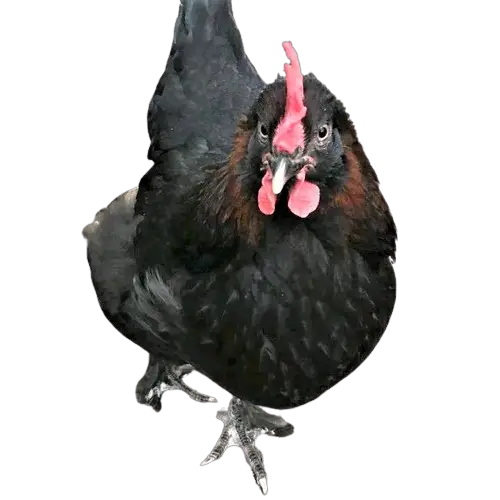
Chicken Breeds That Lay Extra-Large Eggs
-
Lohmann Brown Chickens
The Lohmann Brown, a crossbreed derived from the Rhode Island and White Rock breeds, was developed by a German genetics company specifically for egg-laying. Known for their early and prolific egg-laying abilities, Lohmann Browns are a top choice for egg production.
- Egg Weight: About 2.2 ounces (65 grams)
- Egg Color: Brown
- Egg Size: Extra-Large
- Eggs Per Year: Up to 320 or more
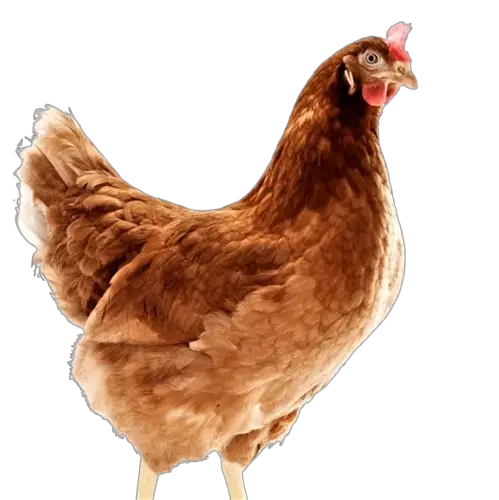
-
Welsummer Chickens
The Welsummer, a Dutch chicken breed, originated from the small village of Welsum in the eastern Netherlands. Developed in the early 20th century from various local breeds, Welsummers are known for productivity and activeness.
- Egg Weight: About 2.2 ounces (65 grams)
- Egg Color: Dark Brown
- Egg Size: Extra-Large
- Eggs Per Year: Up to 180
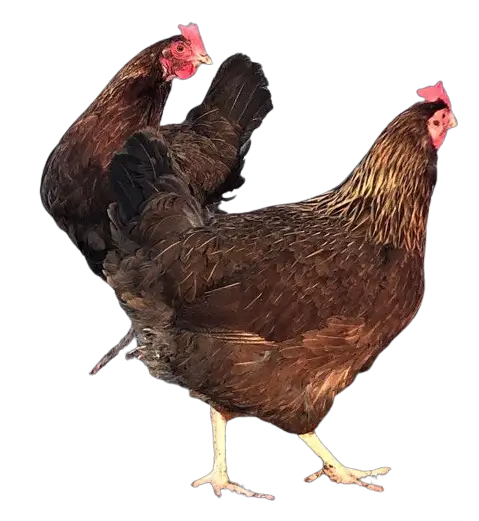
-
Jersey Giant Chickens
The Jersey Giant is a type of chicken from America. It started in Burlington County, New Jersey, in the late 1800s. It’s one of the heaviest chicken breeds. Mature hens weigh 10-11 pounds. The black kind is a bit heavier than the white ones.
- Egg Weight: About 2–2.2 (56–63 grams)
- Egg Color: Brown
- Egg Size: Large to Extra-Large
- Eggs Per Year: Up to 250
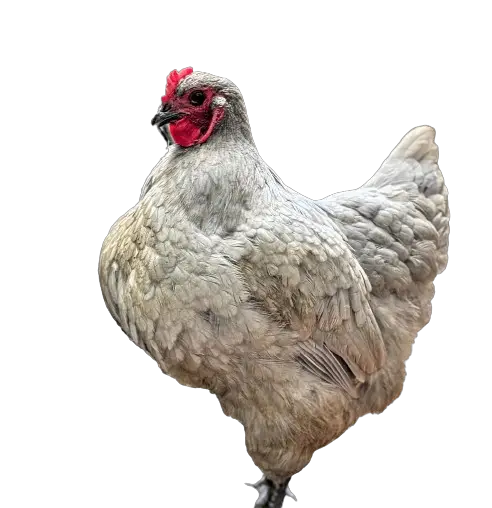
-
Barnevelder Chickens
Barnevelders are from the Dutch town of Barneveld and are known for their large to extra-large dark brown eggs. This resulted from cross-breeding between local Dutch chickens and various “Shanghai” birds imported from Asia to Europe later in the nineteenth century.
- Egg Weight: About 2.1–2.2 ounces (60–65 grams)
- Egg Color: Brown
- Egg Size: Large to Extra–Large
- Eggs Per Year: Up to 200

-
Brahma Chickens
The Brahma is a type of chicken from America. It comes from birds brought over from Shanghai, China. From the 1850s to around 1930, it was the primary type of chicken raised in America for meat. Brahmas are big and calm. They lay big eggs and can be used for both meat and eggs.
- Egg Weight: About 1.9–2.1 ounces (55–60 grams)
- Egg Color: Brown
- Egg Size: Large to Extra-Large
- Eggs Per Year: Up to 200
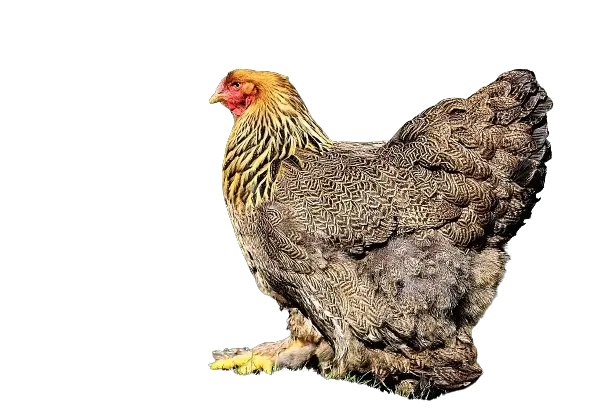
The Orpington is a chicken breed from Britain. William Cook developed it in the late 1800s in Orpington, Kent, southeast England. Initially bred for eggs and meat, it quickly became a show bird. Orpingtons are known for their calmness and lovely feathers.
- Egg Weight: About 2–2.3 ounces (57–65 grams)
- Egg Color: Brown
- Egg Size: Large to Extra-Large
- Eggs Per Year: Up to 200 or more
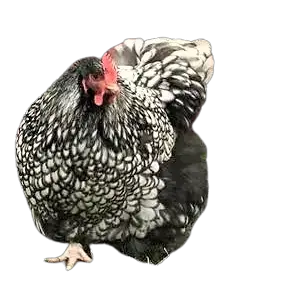
-
Golden Comet Chickens
The Golden Comet is a hybrid chicken created by crossbreeding a female White Rock or Rhode Island White with a male New Hampshire Red chicken. These chickens start laying eggs early and are reliable egg layers, even during colder months.
- Egg Weight: About 2–2.2 ounces (56–62 grams)
- Egg Color: Fine Brown
- Egg Size: Large to Extra-Large
- Eggs Per Year: Up to 320 or more
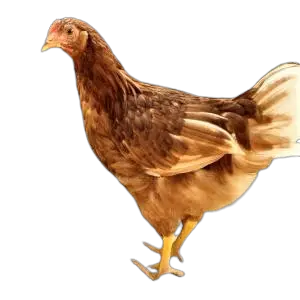
-
Cochin Chickens
The Cochin chicken was a big breed from China to Europe and North America in the 1840s and 1850s. People raise them primarily for shows. They used to be called Cochin-China. Cochin chickens are famous for their fluffy feathers and can lay big eggs.
- Egg Weight: About 2–2.3 ounces (56–65 grams)
- Egg Color: Brown
- Egg Size: Large to Extra-Large
- Eggs Per Year: Up to 180
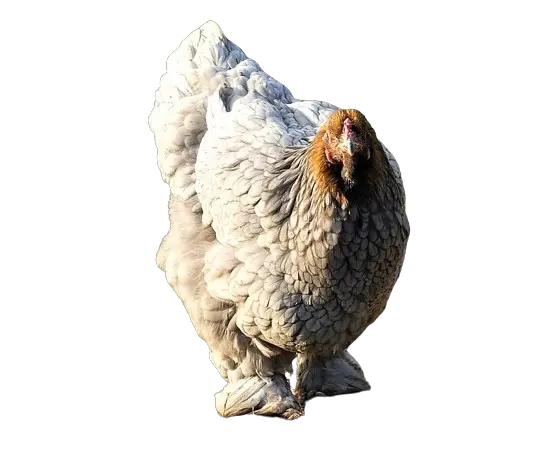
Chicken Breeds for Producing Large Eggs
-
Sussex Chickens
Sussex is a British chicken breed used for both meat and eggs. It has eight recognized colors. The Sussex Breed Club started in 1903. These chickens lay big, light-creamed, friendly eggs, making them great for mixed flocks.
- Egg Weight: About 2.1 (60 grams)
- Egg Color: Tinted
- Egg Size: Large
- Eggs Per Year: Up to 250

-
Appenzeller Spitzhauben Chickens
The Appenzeller Spitzhauben is a Swiss chicken with a fancy crest from the Appenzell area in Switzerland. It’s one of two kinds of chickens from there, the other being the Appenzeller Barthuhner. People know them for their unique look.
- Egg Weight: About 2 ounces (55 grams)
- Egg Color: White
- Egg Size: Large
- Eggs Per Year: Up to 180

-
German Langshan Chickens
The German Langshan chicken breed was developed in Germany from the exported Croad Langshan. It’s known for its exceptional height and robust build. While popular in shows, it’s also valued for its eggs and meat.
- Egg Weight: About 1.9–2.1 (55–60 grams)
- Egg Color: Brownish Yellow
- Egg Size: Large
- Eggs Per Year: Up to 180

-
Chantecler Chickens
Developed in Canada, Chanteclers are robust and prolific egg layers and lay light brown or pinkish eggs annually. Their fluffy white appearance and cold resistance make them ideal for colder regions and a favorite among poultry enthusiasts.
- Egg Weight: About 2–2.1 ounces (58–60 grams)
- Egg Color: Light Brown/Pinkish
- Egg Size: Large
- Eggs Per Year: Up to 220
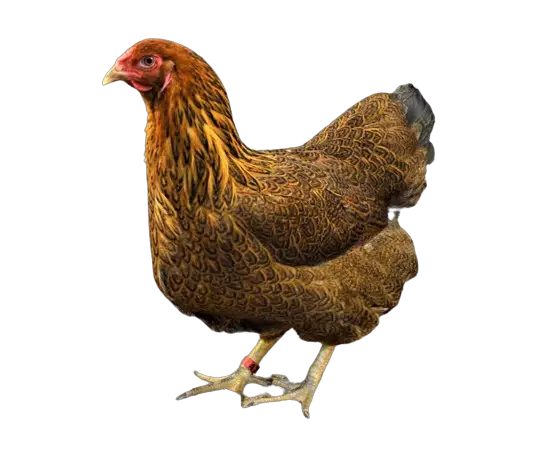
-
Rhode Island Red Chickens
The Rhode Island Red is a chicken breed that started in the United States in the 1800s by cross-breeding different types of birds. Known for its toughness, this breed does well in many different environments.
- Egg Weight: About 2–2.2 ounces (56–62 grams)
- Egg Color: Brown
- Egg Size: Large
- Eggs Per Year: Up to 260
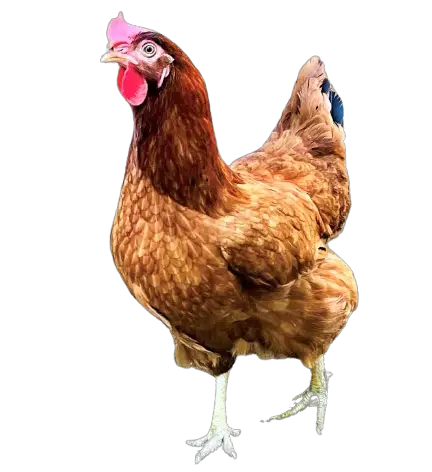
-
Leghorn Chickens
Leghorn chickens, also known as Livorno or Livornese, is a chicken breed from Tuscany, Italy. First exported to North America in 1828 from the port city of Livorno, Leghorns are renowned for their prolific egg production but tend to be skittish and reserved.
- Egg Weight: About 1.9–2.1 ounces (55–60 grams)
- Egg Color: White
- Egg Size: Large
- Eggs Per Year: Up to 300
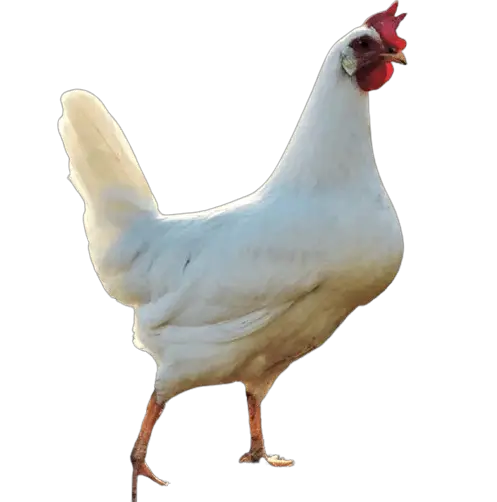
-
Plymouth Rocks Chickens
Plymouth Rock is an American chicken breed first seen in Massachusetts in the 19th century. It was the most popular chicken breed in the U.S. and is used for meat and brown eggs. Plymouth Rocks, also known as Barred Rocks, are calm, gentle, and friendly.
- Egg Weight: About 2 (56 grams)
- Egg Color: Brown
- Egg Size: Large
- Eggs Per Year: Up to 280
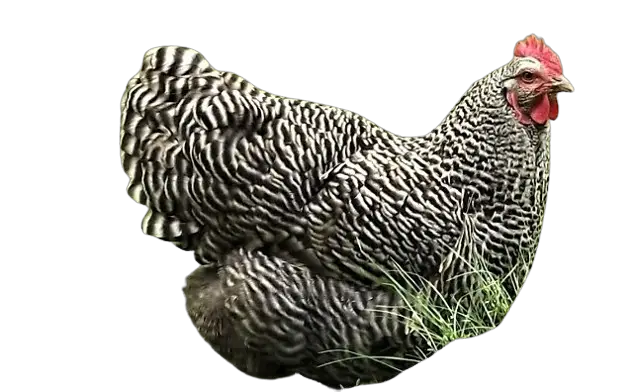
-
Lakenvelder Chickens
The Lakenvelder chicken breed originated from Germany and the Netherlands and was first documented in 1727. Known for its historical importance and excellent egg production, it remains a prized breed due to its activity, lightweight, and egg-laying ability.
- Egg Weight: About 2 (56 grams)
- Egg Color: White, Tinted
- Egg Size: Large
- Eggs Per Year: Up to 200
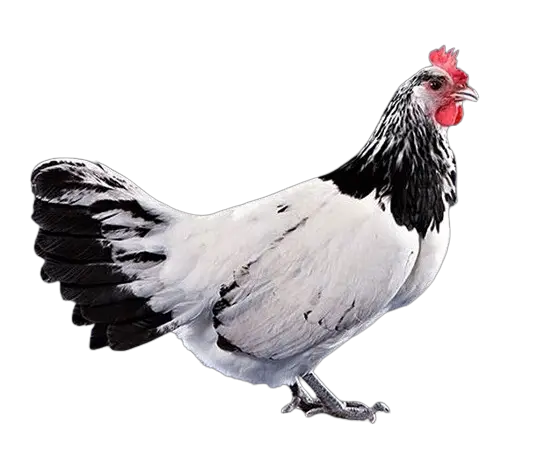
How to Make Your Chickens Lay Larger Eggs
If you want your chickens to lay bigger eggs, you need to follow some steps. Here’s a simple guide:
-
Select the Best Breed
Choose the best breed that lays the largest eggs, such as Blue Andalusian, Minorca Chickens, Welsummers, Rhode Island Reds, Plymouth Rocks, Sussex, Barnvelders, and Marans.
You can also select from the above list or ask breeders about egg size and whether they select a breed for it. Keep chickens until they are 2-3 years old for consistent egg size.
-
Increase Protein Intake
Start with an 18-20% protein layer feed during the first eight weeks of egg laying. Continue with a premium layer feed with at least 16% protein.
-
Proper and Healthy Diet
Avoid too many scraps or treats that can reduce feed consumption. Ensure sufficient calcium intake. Supplement diet with methionine and linoleic acid (e.g., Dried Mealworms). Provide a mash or pellet feed to prevent selective eating deficiencies.
-
Manage Parasites and Stressors
Regularly check for and treat coccidiosis and other parasites. Maintain good biosecurity practices to reduce environmental stressors.
-
Managing Light Exposure
Light affects egg laying; more light speeds up production, and less light delays it. To delay egg Production, Give hens 10 hours or less of light daily until they are 19 weeks old. Reducing light after ten weeks also helps. Reducing egg production helps produce larger eggs and increases the longevity of chickens.
-
Importance of Body Weight and Health
Ensure hens are well-fed and healthy to support larger egg production. Feed a high-protein diet (18%- 20%) early in egg production, then lower it to 15%- 17% after 8-10 months. Hens must be healthy and well-fed to lay the biggest eggs.
-
Effect of Skeletal Size
Larger hens with bigger bones tend to lay larger eggs. Feed pullets a starter diet to promote larger skeletal size until they are 8-10 weeks old.
-
Protect Chickens from Predators
Keep hens in a secure environment to reduce stress and live comfortably to ensure consistent large egg production.
-
Always Check Egg Size
Regularly check the egg size and health of your chickens. If the egg size is smaller than expected, check for disease or other health issues in your chicken and get help from a veterinarian.
Closing
Choosing the proper chicken for large eggs depends on various factors, including breed, age, climate, and housing conditions. The listed above are the top chicken breeds that lay the largest eggs.
Consider your needs and environment to select the best chicken breed that lays the largest eggs for your table.
Let’s end the article. I hope you find this information useful. If you have any questions or experiences to share, please leave a comment below!
FAQs
What chickens lay the largest brown eggs?
Delaware, Isa Browns, Marans, Lohmann Brown, Welsummer, and Rhode Island Reds chickens are popular for laying large brown eggs. These breeds are excellent layers and consistently produce eggs.
What chickens lay jumbo white eggs?
Blue Andalusian Minorca chickens are well-known for laying jumbo white eggs.
How do you get your chickens to lay bigger eggs?
To encourage chickens to lay bigger eggs, ensure a balanced diet rich in protein and calcium. Proper lighting and reducing stress also contribute to healthier and larger eggs.
What chicken lays the largest white eggs?
Blue Andalusian, Minorca, Appenzeller Spitzhauben, and Leghorn chickens are famous for laying the largest white eggs. Their eggs are not only large but also produced in high quantities.
What type of chicken lays the biggest eggs?
Jersey Giants, Blue Andalusian, Minorca, and Marans are the type of chicken popular for laying the biggest eggs.
What type of chicken lays extra-large eggs?
Lohmann Brown, Welsummer, Barnevelder, Cochin, and Brahma are famous for laying extra-large eggs. These breeds are popular among backyard chicken keepers because of their large eggs.
What chickens lay the most large eggs?
Rhode Island Reds and Leghorns are the breeds that consistently lay the most large eggs. They are efficient layers and produce a substantial number of eggs annually.
Are bigger eggs better?
While they may contain more yolk, bigger eggs are not necessarily better, as the quality and nutritional value are similar to smaller eggs. It also depends on personal preference and intended use.
What determines the size of an egg a chicken lays?
The size of a chicken’s egg is determined by its breed, age, diet, and overall health. Genetics plays a significant role, but environmental factors and nutrition are also important.

Hello! I’m Ibrahim, the owner and writer of this blog. I run a chicken farm with 160 chickens, and I’ve gained a lot of knowledge about raising and caring for them. Now, I want to share my insights and experiences with you to help you in chicken keeping.


4 thoughts on “Top 21 Chickens Breeds That Lays the Largest Eggs”